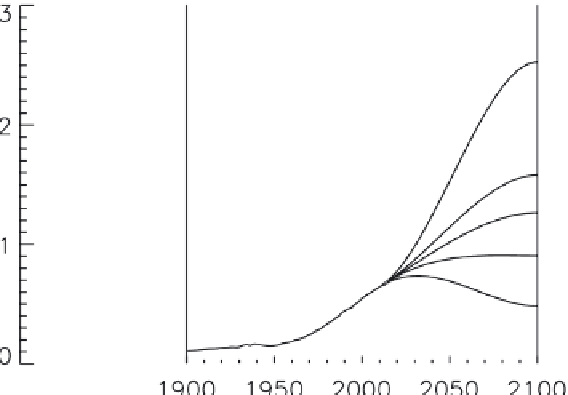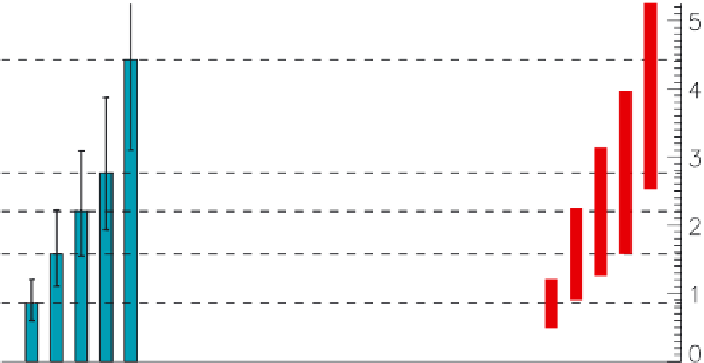Environmental Engineering Reference
In-Depth Information
Cumulative
Emissions
To 2100
Temperature
Change
at 2100
CO
2
Concentration
1000 ppm
650 ppm
550 ppm
450 ppm
350 ppm
Year
FIGURE 3.8 Idealized CO
2
concentration scenarios reaching between 350 and 1,000 ppm at the year 2100.
At the year 2100, the atmospheric CO
2
concentration and global mean temperature change is dependent
on cumulative carbon emissions to date, with variation in the rate of emissions over time affecting only the
rate of increase of forcing and consequent rate of temperature change. Stabilization of CO
2
concentrations
after the year 2100 would require continued low-level CO
2
emissions (leading to increasing cumulative
carbon emitted), whereas zero emission after 2100 would result in slowly declining CO
2
concentrations
and approximately stable global temperature. Cumulative emissions for each scenario shown here are
based on simulations with the UVic ESCM, with uncertainty ranges of 70-140% of the central value based
on Matthews et al. (2009) and Zickfeld et al. (2009). Temperature changes are calculated using 1.75°C per
1,000 GtC emitted, with a 1-2.5°C/1,000 GtC uncertainty range based on Matthews et al. (2009) and Allen
et al. (2009). These uncertainty ranges reflect both uncertainty in the response of carbon sinks to elevated
CO
2
and climate changes, as well as uncertainty in the physical climate system response to change in CO
2
forcing.
centuries. Similarly, should emissions continue at a low level (resulting in
increasing cumulative carbon emissions), atmospheric concentrations may
remain stable, but global mean temperature would continue to increase
over time. Atmospheric CO
2
stabilization is consistent with a small amount
of continued CO
2
emissions at a rate equal to the level of persistent natural
carbon sinks, whereas atmospheric temperature stabilization is only consis-
tent with near-zero CO
2
emissions (Matthews and Caldeira, 2008; Solomon
et al., 2009).




